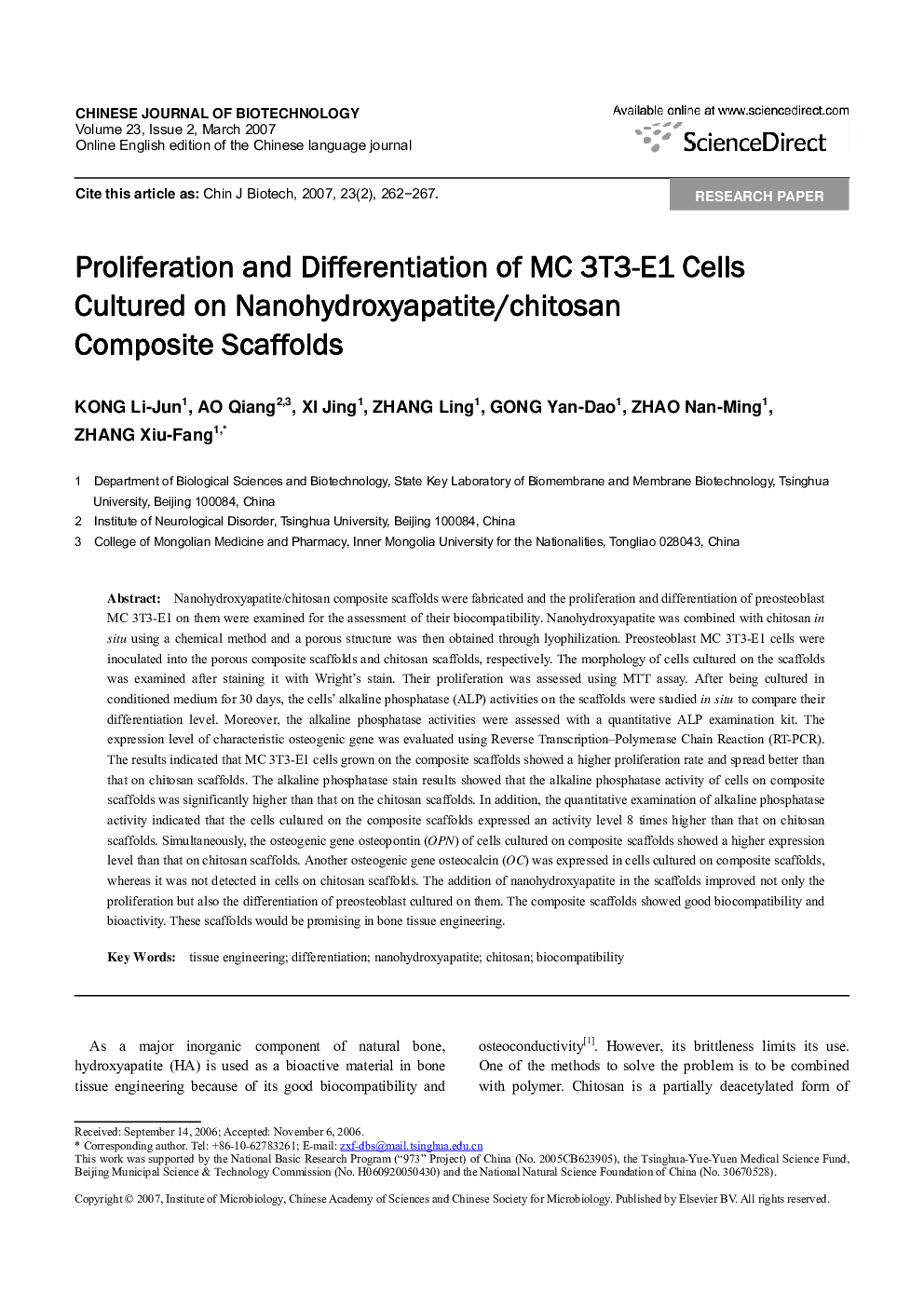| Article ID | Journal | Published Year | Pages | File Type |
|---|---|---|---|---|
| 2078984 | Chinese Journal of Biotechnology | 2007 | 6 Pages |
Abstract
Nanohydroxyapatite/chitosan composite scaffolds were fabricated and the proliferation and differentiation of preosteoblast MC 3T3-E1 on them were examined for the assessment of their biocompatibility. Nanohydroxyapatite was combined with chitosan in situ using a chemical method and a porous structure was then obtained through lyophilization. Preosteoblast MC 3T3-E1 cells were inoculated into the porous composite scaffolds and chitosan scaffolds, respectively. The morphology of cells cultured on the scaffolds was examined after staining it with Wright's stain. Their proliferation was assessed using MTT assay. After being cultured in conditioned medium for 30 days, the cells' alkaline phosphatase (ALP) activities on the scaffolds were studied in situ to compare their differentiation level. Moreover, the alkaline phosphatase activities were assessed with a quantitative ALP examination kit. The expression level of characteristic osteogenic gene was evaluated using Reverse Transcription-Polymerase Chain Reaction (RT-PCR). The results indicated that MC 3T3-E1 cells grown on the composite scaffolds showed a higher proliferation rate and spread better than that on chitosan scaffolds. The alkaline phosphatase stain results showed that the alkaline phosphatase activity of cells on composite scaffolds was significantly higher than that on the chitosan scaffolds. In addition, the quantitative examination of alkaline phosphatase activity indicated that the cells cultured on the composite scaffolds expressed an activity level 8 times higher than that on chitosan scaffolds. Simultaneously, the osteogenic gene osteopontin (OPN) of cells cultured on composite scaffolds showed a higher expression level than that on chitosan scaffolds. Another osteogenic gene osteocalcin (OC) was expressed in cells cultured on composite scaffolds, whereas it was not detected in cells on chitosan scaffolds. The addition of nanohydroxyapatite in the scaffolds improved not only the proliferation but also the differentiation of preosteoblast cultured on them. The composite scaffolds showed good biocompatibility and bioactivity. These scaffolds would be promising in bone tissue engineering.
Related Topics
Life Sciences
Biochemistry, Genetics and Molecular Biology
Biotechnology
Authors
KONG Li-Jun, AO Qiang, XI Jing, ZHANG Ling, GONG Yan-Dao, ZHAO Nan-Ming, ZHANG Xiu-Fang,
